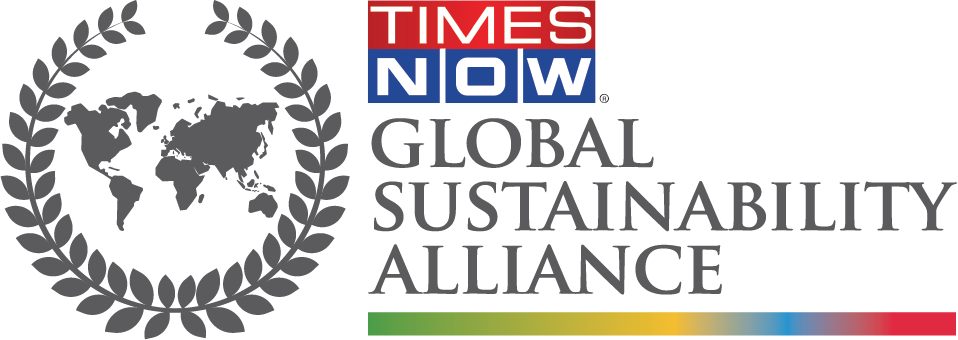What are the implications of this net zero transition?
So how can a company reduce the amount of carbon it generates?
At a broad level, there are three options—create low carbon products, manufacture in a way that cuts down emissions and low carbon logistics for sourcing raw materials and supplying to end consumers. With investors demanding increased transparency, carbon footprints and reporting is no longer optional. For some brands, carbon is becoming part of the core brand proposition as several companies have announced that they will be carbon labelling their products. For instance, Unilever, one of the world’s largest FMCG companies, said that each of the company’s 70,000 products would show on their labels how much greenhouse gas was emitted in the process of manufacturing and shipping them to consumers1. Now with market leaders creating products, communication and tools to map carbon impacts, there is hope that we might be able to cut carbon at scale. The carbon conversation is now part of the brand and carbon reporting, compliance and capture are likely to pick up speed.
- Green supply chains – The choices made by the big brands will impact global supply chains and unleash second and third order effects in products, materials and components / ingredients.
- Brand purpose – With their products being inherently sustainable, brands will use this to drive trust and distinctiveness in consumer communication.
- Digital innovation – Driven by AI, cloud and IoT, this will make products more intelligent and also drive the ability to cater to customer demands.
- Strategic partnerships – These will emerge to navigate the new paradigms of sustainability, digital innovation and sustainable markets. Peer learning and knowledge sharing will play an important role in raising standards for a net zero world. For instance, the Fashion Industry Charter for Climate Action has Adidas, Nike and Decathlon France as signatories amongst others2.
- Energy transition – While factories will shift to renewable energy, so will offices and stores.
- New Design – Necessitated by the cost of managing reverse supply chains and inspired by consumer demands, products will be radically redesigned—natural, local, environmentally friendly themes will be prominent.
57% of the companies studied mentioned that they aspire to make their operations either carbon neutral or achieve net-zero. And 76% of them mentioned specific timelines to achieve these targets. We find that most of these are clustered around 2040, followed by 2050.

List of companies along with their Net-zero/carbon-neutrality target year:
| United Spirits Ltd. | 2025 |
| Cipla Ltd. | 2025 |
| Godrej Consumer Products Ltd. | 2025 |
| ABB India Ltd. | 2030 |
| Dr. Reddy’s Laboratories Ltd. | 2030 |
| Hero MotoCorp Ltd. | 2030 |
| Hindustan Unilever Ltd. | 2030 |
| Larsen & Toubro Infotech Ltd. | 2030 |
| State Bank of India | 2030 |
| Tata Consultancy Services Ltd. | 2030 |
| Welspun India Ltd. | 2030 |
| Glenmark Pharmaceuticals Ltd. | 2030 |
| MindTree Ltd. | 2030 |
| YES Bank Ltd. | 2030 |
| HDFC Bank Ltd. | 2032 |
| L&T Finance Holdings Ltd. | 2035 |
| Reliance Industries Ltd. | 2035 |
| Tech Mahindra Ltd. | 2035 |
| Toyota Kirloskar Motor India | 2035 |
| Bharat Forge Ltd. | 2040 |
| Dabur India Ltd. | 2040 |
| Dalmia Bharat Group | 2040 |
| GAIL (India) Ltd. | 2040 |
| HCL Technologies Ltd. | 2040 |
| Hindustan Petroleum Corporation Ltd. | 2040 |
| Infosys Ltd. | 2040 |
| Larsen & Toubro Ltd. | 2040 |
| Mahindra & Mahindra Financial Services Ltd. | 2040 |
| Mahindra & Mahindra Ltd. | 2040 |
| Marico Ltd. | 2040 |
| Oil And Natural Gas Corporation Ltd. | 2040 |
| Welspun Corp Ltd. | 2040 |
| Bharat Petroleum Corporation Ltd. | 2040 |
| Wipro Ltd. | 2040 |
| Grasim Industries Ltd. | 2040 (VSF) |
| Cummins India | 2050 |
| Exide Industries Ltd. | 2050 |
| Hindalco Industries Ltd. | 2050 |
| Hindustan Zinc Ltd. | 2050 |
| JSW Energy Ltd. | 2050 |
| Shree Cements Ltd. | 2050 |
| Skoda Auto Volkswagen India Pvt. Ltd. | 2050 |
| Tata Steel Ltd. | 2050 |
| UltraTech Cement Ltd. | 2050 |
| Vedanta Ltd. | 2050 |
| Ambuja Cements Ltd. | 2050 |
| Bharti Airtel Ltd. | 2050 |
| Adani Ports & Special Economic Zone Ltd. | 2050 |
| Apollo Tyres Ltd. | 2050 |
| Tata Power Company Ltd. | Before 2045 |
Renewable energy, increasing energy efficiency, carbon credits and waste-related measures are the most common strategies being implemented. Companies are adopting net zero pathways as part of core business strategies either because they don’t want to be left behind or international buyers are demanding that they be net zero. For multinational companies such as Bosch and LafargeHolcim, net zero commitments and targets cascade down from their international headquarters. Some companies also mentioned that they contribute to community projects that help them offset their emissions from operations – Infosys especially does this.
Measures to achieve Net Zero

The companies with notable reduction in GHG emissions intensity in the last 2 years are Jubilant Pharmova, Tata Consultancy Services, L&T Infotech, Infosys, Bharat Forge, Grasim Industries, IOCL, NLC India, Vedanta and Dr Reddy’s Laboratories. L&T Infotech and Infosys featured here last year too. Other companies are making significant efforts to create strategies for Net Zero pathways. A notable mention needs to be made of energy companies who have a rapid scale up and business transformation ahead.
Top 10 companies with % GHG emission intensity reduction

Net Zero aspirations are a great beginning, but much more needs to be done
1 2 billion people use these products. By 2030 they’ll be biodegradable, Hanna Ziady, 7 July 2020, https://edition.cnn.com/2020/06/15/business/unilever-climate-change-commitments/index.html
2 https://unfccc.int/climate-action/sectoral-engagement/global-climate-action-in-fashion/about-the-fashion-industry-charter-for-climate-action
